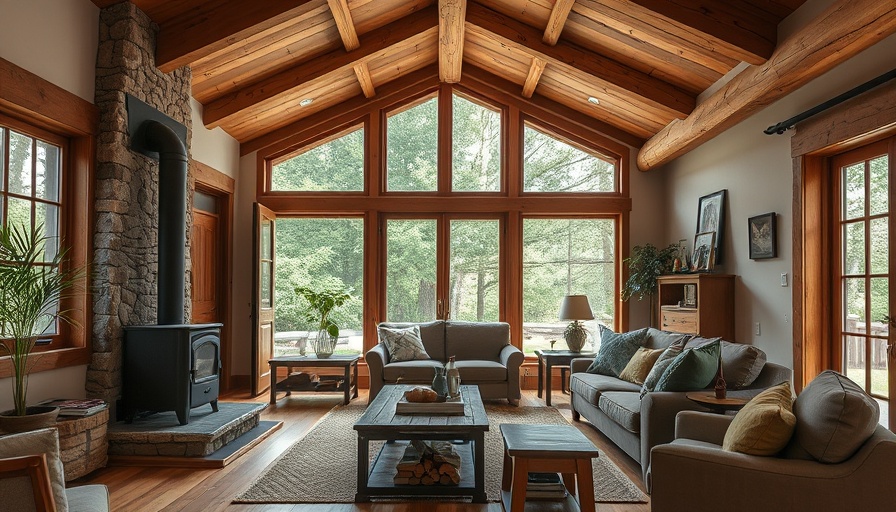
Redefining Coastal Architecture: A Look at Pines Beach Cabin
The Pines Beach Cabin is more than just a home; it's a holistic reflection of community, culture, and individual expression. Nestled in Fire Island Pines, this mid-century abode offers a unique twist to traditional coastal design, thanks to the innovative vision of BOND Studio's founders, Noam Dvir and Daniel Rauchwerger. Their approach to architecture goes beyond mere aesthetics; it seeks to embrace and elevate the queer community that has long cherished this space as a summer retreat.
Creating a Space for Everyone
As the couple redesigned their 1965 stilted cabin, their guiding principle was inclusivity. It isn't just about shaping a singular family life but crafting a space for a 'non-nuclear family' that embodies shared experiences among friends and community. The design features an upper level that hosts communal areas, alongside a primary bedroom featuring an interior window that merges openness with the need for privacy. For instance, guests can enter the suite below through an external staircase, allowing for discreet late-night escapades.
The Flamboyant Modernism of Fire Island
Fire Island's architectural heritage heavily influenced the design choices made by Dvir and Rauchwerger. They aimed to maintain continuity with the vibrant modernism showcased by iconic local architects such as Horace Gifford and Harry Bates. The aesthetic doesn’t merely blend into its environment; it actively engages with its surroundings. The use of vertical cedar siding not only fits seamlessly with neighboring mid-century homes but also pays homage to the flamboyant history of architecture in the Pines.
A Timeless Connection to the Environment
The interior of the cabin cleverly retains the original pine ceiling, reflecting years of weathering and history that add character and warmth. The couple cleverly navigated supply challenges common on islands by sourcing materials from surrounding homes, including a distinctive 1970s fireplace that was repurposed to keep the narrative cohesive. This sustainable approach to design resonates deeply with contemporary architectural trends, emphasizing adaptability and eco-friendliness.
Design with a Purpose: The Daybed Experience
The design choices highlight social connection; for example, the choice of a custom queen-sized daybed in the living room fosters intimate interactions among guests. "It's bourgeois to do a sofa," comments Noam, emphasizing the spirit of community intrinsic to their home's design. It transforms the aesthetic into a functional conversation starter, encouraging guests to engage in repartee.
Future of Coastal Architecture: Lessons from Pines Beach Cabin
The exclamation point of Pines Beach Cabin is its role as a beacon for future architectural endeavors, particularly those that prioritize communal and cultural elements. As the couple continues to craft spaces that challenge conventional norms, they inspire other designers to explore inclusivity and accessibility in their projects. Their approach underscores a significant trend in modern architecture: the blend of sustainability, community orientation, and identity.
Conclusion: Embracing Diversity through Design
The Pines Beach Cabin serves as an illustration of how architecture can embody community values while maintaining a dialogue with nature and sustainability. As homeowners and contractors alike seek to create spaces that reflect diverse perspectives and lifestyles, the lessons gleaned from this unique cabin offer key insights for future projects. For those invested in home renovations, incorporating such thoughtful design principles can not only enhance a property’s value but also its communal significance.
 Add Row
Add Row  Add
Add 






Write A Comment